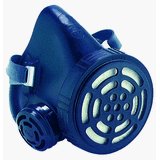
A quality disc sander back-up pad should have:
1. A specially designed, environmentally friendly, molded polyurethane foam, that dampens vibration to prevent your tool from bouncing, yet is flexible and tough enough to withstand the rigorous operation of dual-action random orbit sanders. A permanent bond between the polyurethane and other components of the pad eliminates separation problems.
2. A rugged thermoset fiberglass epoxy backing, that withstands the abuse of heat, flexing and impact, to keep the pad running flat and true for a long time. Aluminum backings bend from impact and lose their flatness, while heat and flexing cause molded plastic backings to warp, distorting the face of the pad. A pad that is not flat causes vibration--which fatigues the user and compromises your finish.
3. Full 1/2" diameter vacuum holes that match the industry standard in sanding discs and allow maximum performance of your tool's vacuum system.
4. A durable welded and plated stud assembly. Welding assures a permanent alignment between the pad and the tool. Plating assures easy pad removal by preventing corrosion.
5. A stud assembly that is rigidly attached to the backing with four rivets. Stud assemblies that are molded in place can loosen and strip causing poor performance and difficulties when removing the pad from the tool. A large, flat, raised steel washer with a four rivet attachment forms an ideal distributor of stress. This assures perfect alignment with all tools, and allows the pad to remain in service for a long time.
6. An embossed vinyl facing or hook facing that is intimately molded with the polyurethane to create a permanent durable and flat surface. Embossed vinyl facings offer maximum adhesion with PSA style paper while operating the tool, yet allow quick and easy replacement. Quality hook facings also offer secure adhesion yet quick and easy removal.
7. Strict tolerance on weight, balance, roundness, and flatness. A pad that is not the correct weight, out of round, out of balance, or not flat causes vibrations which fatigue the user and prevent creating a professional finish. Strict tolerances assure you that each pad performs consistently for a long time.
Abrasive Resource carries back-up pads in stock for same day shipping in both the embossed vinyl facing for PSA or the hook facing for hook-n-loop discs. Check out our website at: www.abrasiveresource.com




